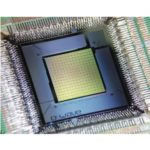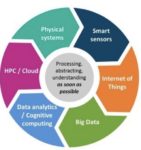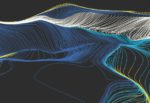“Micron’s automata processor (AP) exploits massively parallel in-memory processing capability of DRAM for executing NFAs and hence, it can provide orders of magnitude performance improvement compared to traditional architectures. This paper presents a survey of techniques that propose architectural optimizations to AP and use it for accelerating problems from various application domains such as bioinformatics, data-mining, network security, natural language, high-energy physics, etc.”
New Paper: Practical Annealing-Based Quantum Computing
Researchers at D-Wave Systems have published a new paper on Practical Annealing-Based Quantum Computing. “According to the paper, quantum annealing is the viable way forward to connect quantum hardware to real-world applications. Providing annealing-based QPUs as part of a complete computing platform within a declarative paradigm has made this nascent technology accessible for many users who, in turn, are helping to drive this approach forward.”
Report: Machine Learning Workloads Bolstering HPC Market
Intersect360 Research has completed its market sizing and new five-year forecast for the High Performance Computing industry. “AI workloads are sweeping through all types of enterprises and research, which is affecting both the HPC and Hyperscale markets. In HPC, we’re seeing not only a measurable affect on top-line budget expectations, but also different technology choices being made to accommodate machine learning workloads.”
NEXTGenIO Project Delivers Prototype to EPCC
The EPCC supercomputing centre at the University of Edinburgh has installed a prototype system developed by the NEXTGenIO project. Funded by the European Commission, NEXTGenIO is an R&D project tasked with developing solutions to high performance computing’s I/O and data challenges. “Our ongoing collaboration with NEXTGenIO allows us to develop solutions to speed up time-consuming I/O operations in HPC applications and workflows, leading to faster execution, less use of resources, and improved scalability,” said Trish Damkroger from Intel.
New Blueprint lays out Strategic Research Agenda for HPC in Europe
The European ETP4HPC initiative has published a blueprint for the new Strategic Research Agenda for High Performance Computing. “This blueprint sketches the big picture of the major trends in the deployment of HPC and HPDA methods and systems, driven by the economic and societal needs of Europe, taking into account the changes expected in the underlying technologies and the overall architecture of the expanding underlying HPC infrastructure.”
New Paper: Nanophotonic Neural Networks coming Closer to Reality
Over at the Intel AI blog, Casimir Wierzynski writes that Optical Neural Networks have exciting potential for power-efficiency in AI computation. “At last week’s CLEO conference, we and our collaborators at UC Berkeley presented new findings around ONNs, including a proposal for how that original work could be extended in the face of real-world manufacturing constraints to bring nanophotonic neural network circuits one step closer to a practical reality.”
Spectra Logic Report: Digital Data Storage Outlook 2019
Today Spectra Logic announced the publication of “Digital Data Storage Outlook 2019,” the company’s fourth annual report on the data storage industry. “This report provides a high-level snapshot of the trends that will influence technological advancements in the data storage industry, and the workflows that will impact the way the world uses and preserves its digital information for the long term.”
Hyperion Research: HPC Server Market Beat Forecast in 2018
Hyperion Research has released their latest High-Performance Technical Server QView, a comprehensive report on the state of the HPC Market. The QView presents the HPC market from various perspectives, including competitive segment, vendor, cluster versus non-cluster, geography, and operating system. It also contains detailed revenue and shipment information by HPC models.












